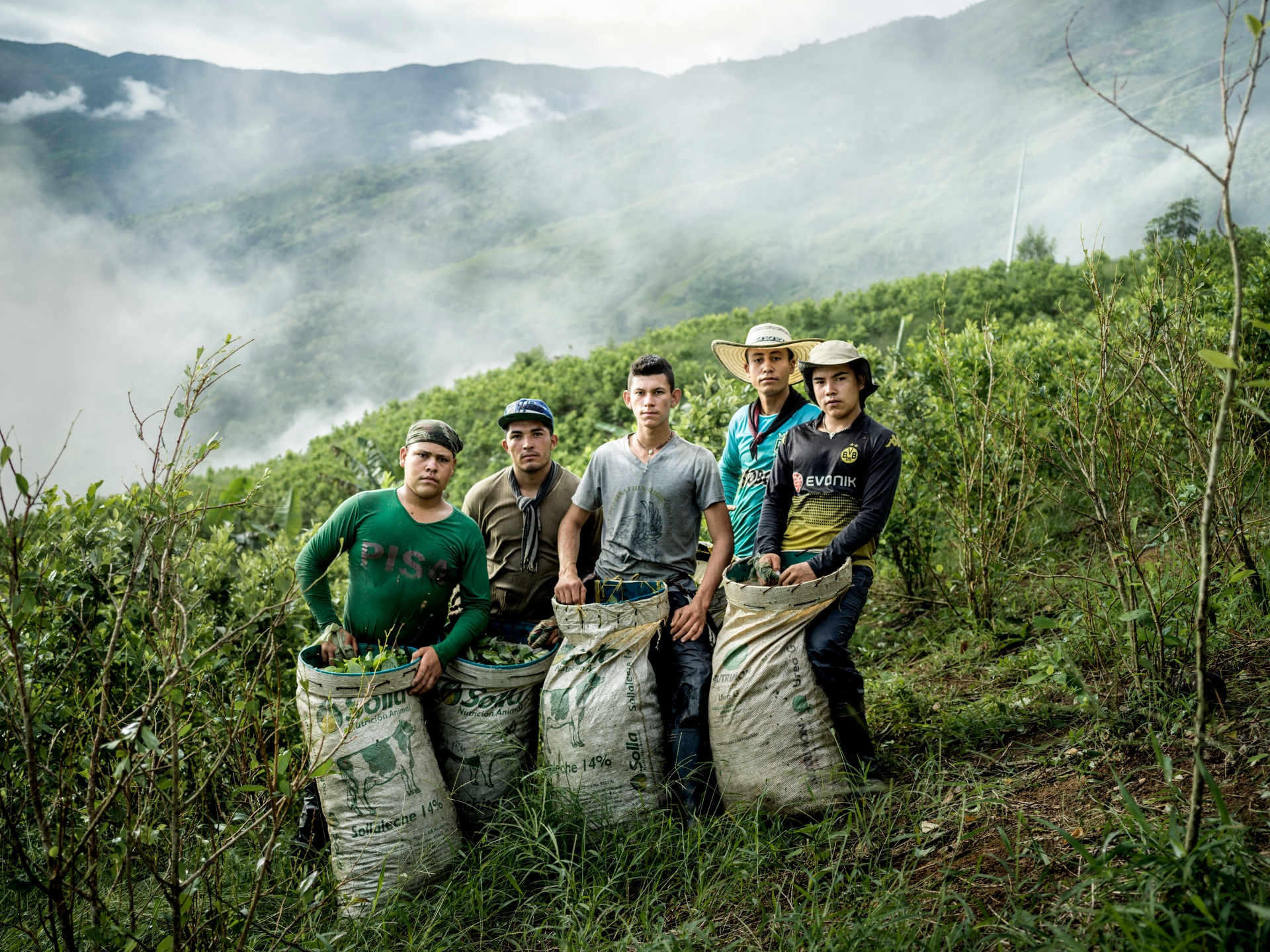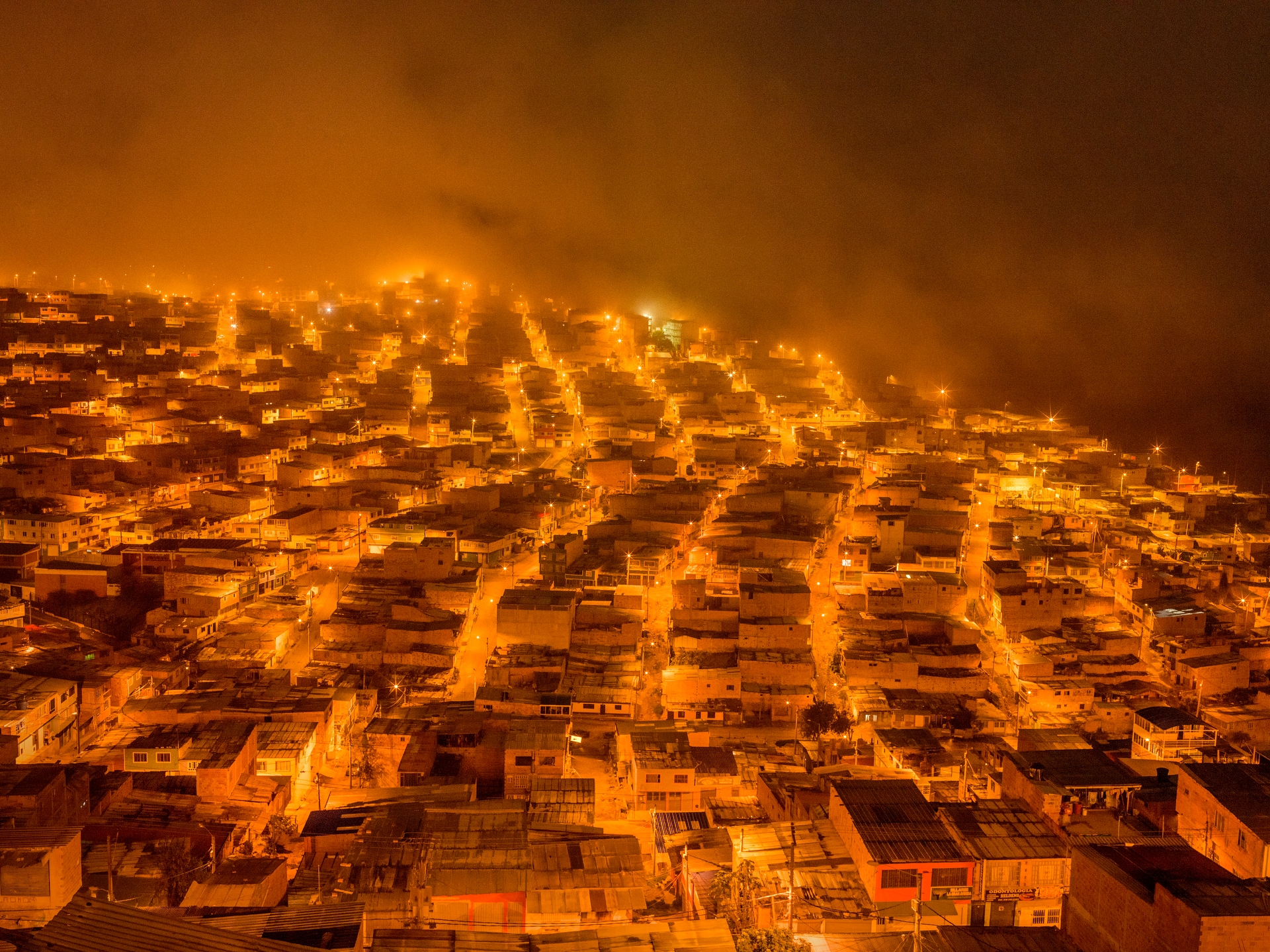This article originally appeared on VICE Denmark
Mads Nissen is a Danish documentary photographer who has covered conflicts around the world, including the recent wars in Libya and Afghanistan. In 2015, the 38-year-old won the World Press Photo of the Year award for his work capturing the lives of a gay couple in Russia.
Videos by VICE
A year later, Mads was hired by the Nobel Peace Center to work on a photo series of the then-Colombian president, Juan Manuel Santos, as his government negotiated a peace deal that brought an end to the 50-year conflict with the revolutionary FARC movement – the guerrilla army that has financed much of its insurgency operation through drug trafficking.
Soon after arriving in Colombia, Mads realised that if he wanted to capture the full picture, he needed to see both sides. So before he knew it, he was photographing deep in the Colombian jungle under a makeshift awning, watching farmers producing cocaine in clouds of toxic fumes.
This work makes up his latest book, We are Indestructible. I recently caught up with Mads to talk about the project, what it’s like to win the trust of a guerrilla army, and the future of Colombia’s drugs landscape.

VICE: Hi, Mads. Why didn’t you just take photos of the president like you were supposed to?
Mads: I wanted to see both sides of the story, in order to understand more of the country – to understand more of who and what FARC are and to see the poverty and inequality in Colombian society.
How did you find your way into that world?
Through my international work I have put together a fairly extensive network of contacts. I eventually met some young people who pick coca leaves for a living, and they let me tag along with my camera.
They would transport the leaves to a lab in the jungle, where I was allowed to take photos of them as long as I didn’t show their faces. But after only a few hours they became more and more open with me and they started to let me photograph their faces. Once you’ve been allowed in at one lab, others are easier to access.

What did you learn about the production process?
The boys I met earn twice as much picking coca leaves as they do picking coffee beans, so obviously many choose the former. But they don’t use the drug themselves – they prefer alcohol. The boys deliver the leaves to a man named André, who runs a lab in the jungle hidden under a makeshift awning, making it undetectable from the sky. He crushes the leaves with a gardening tool and douses them with chemicals, then he uses diesel oil, caustic soda and cement, and leaves them sitting for a while to concentrate the active ingredients. The entire process takes a day. It smells terrible – you almost get high from the fumes alone.
How many people are involved in the production process?
There’s more cocaine being manufactured in Colombia than ever before. You see fields spread sporadically across the countryside, but once you venture more inland they are everywhere. I once visited an area close to the city of Cali with marijuana and coca fields as far as the eye could see. Everyone in the local community seemed to be involved in the production or sale of cannabis and cocaine. But no one uses the products themselves – not even André. His dream is to become a pilot, so he’s saving up for his certificate.
Was it hard to gain their trust?
Yes, of course. The people there generally distrust the media, as well they should. The media often portray them as terrorists, and obviously that’s not how they see themselves. They need a really compelling reason to let you in. Most of the time, when they do, it’s because they want the world to see things from their perspective.
Many FARC soldiers have been involved in the organisation since they were teenagers, and they’re not used to talking to westerners. They’re used to interacting with a gun in their hands, and that obviously changes a relationship.

Did you ever fear for your life?
In Colombia there are regions that are under government control and regions that are under some FARC control. But there are also areas where neither is in control, and those can be dangerous to move around in. There were areas where I had previously worked that I wanted to return to, but I was told it was impossible because they could no longer guarantee my safety there. These were areas where police officers had recently been killed.
I’ve taken photos of the Colombian president as well as the leader of FARC. The latter was one of the most wanted terrorists in the world, and has lived his whole life in the jungle. All of his predecessors have been killed, so understandably he’s on edge. He is a short, fat man, and I photographed him with his dog, Winny, while he was smoking a cigarette. After the peace accord, FARC has become a legitimate political party, but they are still learning how to navigate the transition from a guerrilla organisation to a political movement. When I finished the photo session with the FARC leader, a PR guy approached me and said, “We don’t want any photos of him smoking cigarettes – it’s bad for his image.” I couldn’t help but laugh – considering everything FARC has been involved in, smoking is probably the least of their problems.
What was your overall impression of FARC?
They feel a strong sense of unity. They lead a simple life in the jungle, where they believe they’re fighting for a cause and making a difference in the world. I don’t share their beliefs, and I have been open with them about that, but I also don’t consider them terrorists. Simply condemning people isn’t helpful when you’re trying to cover them as a photographer. Even if I were to document the lives of ISIS fighters, I would need to examine the nuances of their lives instead of simply writing them off as terrorists.

Did anything surprise you on your journey?
I was surprised to learn how much we all have in common. People are motivated and driven by the same things. In a world as crazy as ours, it’s life affirming to realise that you can connect with anyone as long as you’re open to hearing them out. Maybe that makes me sound like a hippie, but that’s not really it – I don’t like to judge people. André has produced tons of cocaine, but who is responsible? The person making it or the person consuming it? I’m more curious than I am judgmental.
What do you reckon the future holds for Colombia?
It’s a wonderful, awe-inspiring country. I photographed a father with his two daughters by a marijuana field. The father said to me: “Drugs bring violence, addiction, chaos, conflict and armed guerrillas to our country. But if I didn’t have this, I wouldn’t be able to afford school uniforms for my daughters.” He’s tried farming other types of crops in the past, but none of them yield a profit you can live on. The infrastructure in the mountains is crumbling, and it’s easier to move half a kilo of cocaine down the hillside than a truckload of tomatoes. When people are living in extreme poverty, they do things out of desperation. If you wish to combat that you need to address the issue of poverty first.
Scroll down to see more photos from Mads Nissen’s We are Indestructible.













